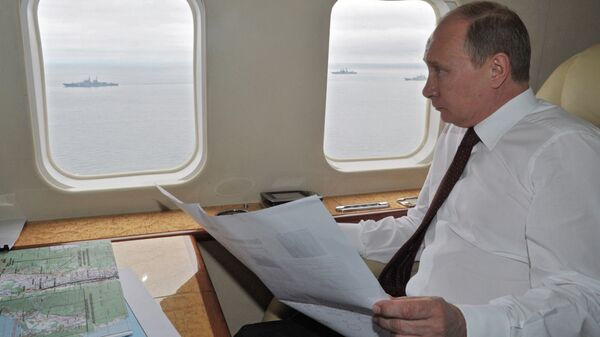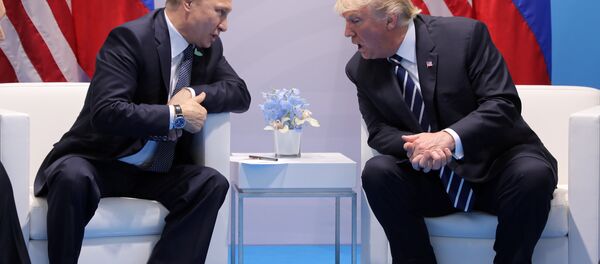Flight tracking data from FlightRadar24 has shown that the Russian presidential Il-96-300PU flying from Moscow to Hamburg Thursday deviated from a possible direct route over Belarusian and Polish territory, instead flying over the Baltic Sea and non-NATO states Finland and Sweden before entering Danish and German airspace.
President #Putin's plane avoiding #Baltic airspace on way from #Moscow to #G20Summit in #Hamburg: https://t.co/pa9HiKnk1W pic.twitter.com/PYO4i0G6cE
— VykintasPugačiauskas (@pugaciauskas) 7 июля 2017 г.
Presidential spokesman Dmitry Peskov declined to comment on the reason for the detour. "I will leave this question without an answer, because all issues related to the president's movement directly concern his security," he said. "All measures considered expedient are taken," he added.
The Russian president had flown over Polish airspace repeatedly in the past, including during his previous European visit in May to meet with French President Emmanuel Macron. His plane also passed over Lithuanian airspace last October.
But the presidential plane's detour this time, along with the lack of a detailed explanation from the Kremlin, led to wild speculation among some Western media, including British tabloids Daily Mail and The Sun, that Putin possibly 'feared getting shot down'.
Cool-headed observers say there is a much simpler and more logical explanation behind the decision to fly over the Baltic Sea, and recalled the incident from late last month when a Polish F-16 flew dangerously close Russian Defense Minister Sergei Shoigu's plane, forcing one of the Su-27s escorting the minister to warn off the offending jet.
Putin's security team, according to these observers, likely sought to avoid a repeat of that provocative incident, particularly amid the conspiracy theory-driven campaign in Warsaw speculating that Russia may have been behind the Polish presidential plane crash in Smolensk, Russia in 2010, which resulted in the death of President Lech Kaczynski.
"The fact that we the public do not know anything about any incidents connected to the president is a sign of the fact that his security is working at the highest level," Martynov added.
Russia's fleet of presidential Il-96-300PUs is believed to consist of four aircraft. Built by the Voronezh Aircraft Factory, the planes have a series of advanced security features, including a protective coating along the frame to confuse radars, a jamming system against MANPADS missiles, and even their own air defense system. They are also thought to contain a rescue system for their VIP passenger. All this equipment becomes especially important when the president is flying to countries where an escort by Russian military aircraft is impossible to implement.
"The Polish Air Force is the only air force in the world equipped with both American and Russian equipment. Specifically, they have 48 F-16s, about 30 MiG-29s, and about 30 Su-22 fighter-bombers in service, with another 20 in storage. After the collapse of the Soviet Union, the Poles bought up all the former East German and Czech MiG-29s. Their ground-based air defenses include a battery of US Patriots, as well as Soviet-era S-200 and Krug missile defense systems," the analyst said.
In other words, while the real reason for the presidential plane's detour may never be officially revealed, it seems the security services' current motto is 'better safe than sorry', particularly after the provocation involving Defense Minister Shoigu.





